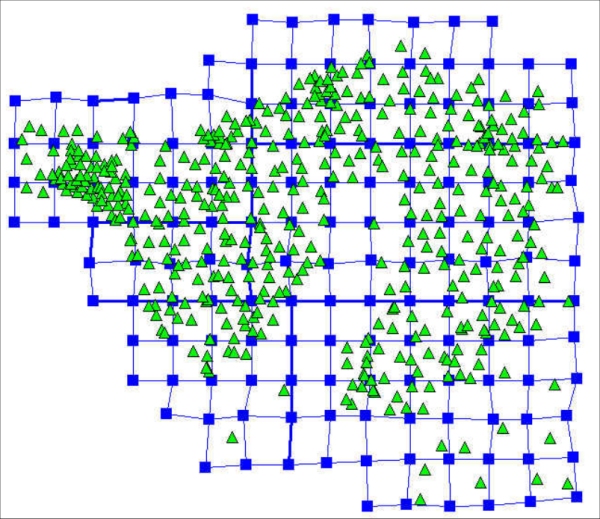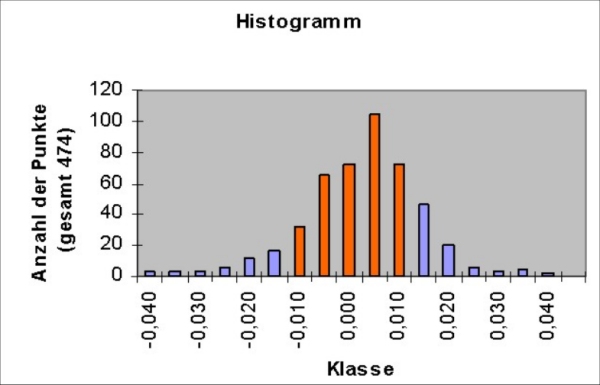DFHRS - Saarland
The computation ation of the 1 cm DFHRS database of the German country Saarland is based on a 5 km x 5 km mesh design (fig. 1). To reduce the long-waved systematic errors 6 patches with individual datum parameters were modelled (fig. 1, think blue lines; see also DFHRS Concept Stage 1 (2b)). The EGG97 observations were introduced with 474 identical points (B,L,h|H).

Fig. 1: DFHRS mesh and patch design (blue) and identical points (green) for Saarland.
According to the DFHRS quality control the co-called reproduction value were computed for each identical points (B,L,h|H). Fig. 2 shows the histogram of the reproduction values.

Fig. 2: Histogram of the reproduction values of the identical points.
According to fig. 2 nearly 75 % of the used identical points (B,L,h|H) can be reproduced out of the DFHRS database with a deviation better than 1 cm, the average over 474 points is 9.3 mm. It shows, that "1 cm DFHRS database standard" was clearly achieved in Saarland. Fig 3 shows the result of a country wide control of the 1cm DFHRS database Saarland using independent levelled control points H, in comparison to GNSS heighting H = hGNSS – N (DFHRS database).

Fig. 3 : Differences between the NN-heights H=h-N from GNSS-heighting with SAPOS®-HEPS using the 1cm DFHRS database N and levelled heights in 6 country-wide control points H

